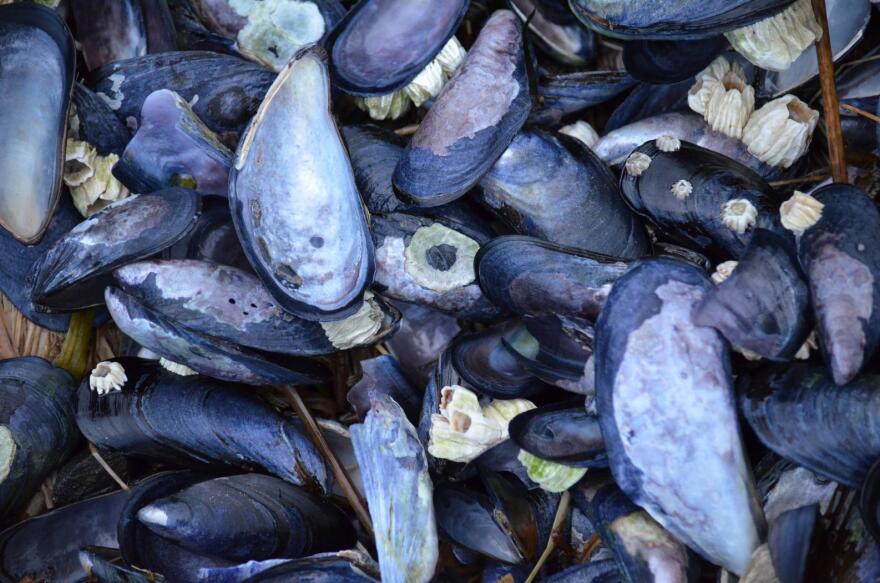The State Department of Health and Social Services is warning residents to exercise caution when collecting shellfish in Homer harbor.
Recent tests have shown elevated saxitoxin levels in blue mussels.
Catherine Bursch is the Harmful Species Program Coordinator at Kachemak Bay Research Reserve. She samples blue mussels every two weeks in Homer harbor to monitor for toxins.
“We did pick up over the regulatory limit of toxins in the shellfish that we sample regularly from the Homer harbor,” Bursch said.
These naturally occurring toxins are produced by microscopic one-celled creatures called phytoplankton. Phytoplankton are eaten by larger species of plankton, which are prey for filter-feeding animals, including clams and mussels.
The toxins become more and more concentrated as they move up the food chain.
When humans eat contaminated shellfish, it can cause an illness called paralytic shellfish poisoning. The symptoms include tingling lips and mouth, nausea and difficulty breathing. If consumed in large enough quantities, the toxins can cause paralysis and death.
Although these toxin-producing plankton are almost always present in the water, at certain times of year, their populations increase. That’s when the risk of paralytic shellfish poisoning is highest.
Bursch said that while commercially produced shellfish are tested regularly, recreational shellfishing areas may not be.
“If you dig shellfish recreationally, you have to understand that no one is testing the beach. The state does not have a program that tests random beaches for the recreational harvesters,” Bursch said.
According to Alaska state policy, recreational shellfish harvesters dig at their own risk.

